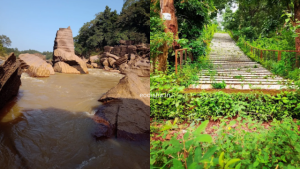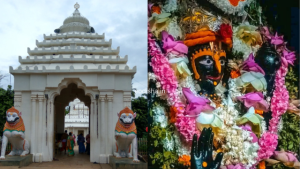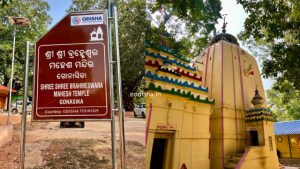Kichakeswari Temple is an ancient and sacred temple located in Khiching, a small village in the Mayurbhanj district of Odisha. This temple is dedicated to Goddess Kichakeswari, a powerful form of Goddess Durga, and is one of the oldest Shakti Peethas in the region.
The temple is known for its artistic beauty, especially the black chlorite stone used in its construction. The carvings and sculptures on the temple walls are detailed and reflect the rich cultural heritage of Odisha.
Contents
History
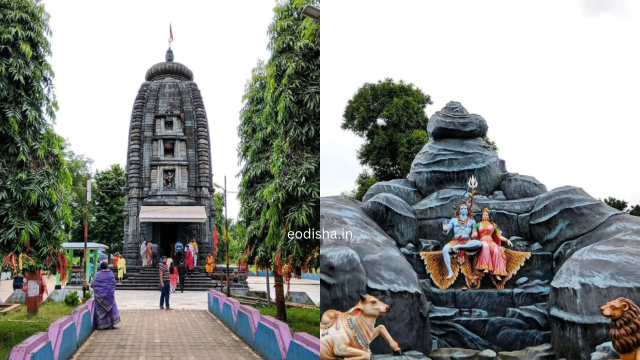
Kichakeswari Temple has a deep connection with the Bhanja dynasty, which ruled the region from the 9th to the 12th century. Khiching was once the capital of the Bhanja kings, and they worshipped Goddess Kichakeswari as their royal deity.
Over time, the temple was damaged and lost its original structure. In the 1930s, Maharaja Purna Chandra Bhanjadeo of Mayurbhanj took the initiative to reconstruct the temple. He used the ruins and ancient stone remains found in the area to rebuild it. Today, the temple stands as a blend of ancient craftsmanship and modern restoration.
A small museum inside the temple complex preserves many historical idols, inscriptions, and temple artifacts collected from the nearby ruins.
Price & Ticket
-
Temple Entry: Free for all visitors
-
Museum Entry Fee: ₹10 per person (subject to change)
-
Photography: Allowed, but flash should be avoided inside the museum
Best Things to Do
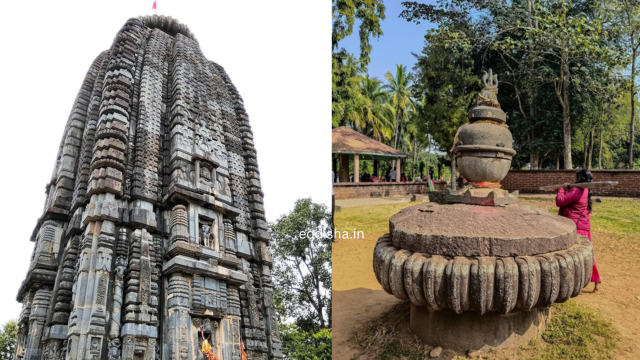
-
Offer prayers to Goddess Kichakeswari and feel the spiritual atmosphere.
-
Observe the stone carvings and appreciate the detailed sculpture work.
-
Visit the onsite museum, which holds ancient statues, coins, weapons, and religious items.
-
Walk around the temple to enjoy the peaceful village setting and the beauty of Odisha’s rural architecture.
-
Take photographs of the temple architecture and surrounding landscape.
Restrictions
-
Footwear must be removed before entering the temple.
-
Photography should be done respectfully and without disturbing other visitors.
-
Smoking, alcohol, and non-vegetarian food are strictly prohibited inside the temple area.
-
Visitors should maintain silence and not touch the ancient stone idols or carvings.
How to Reach
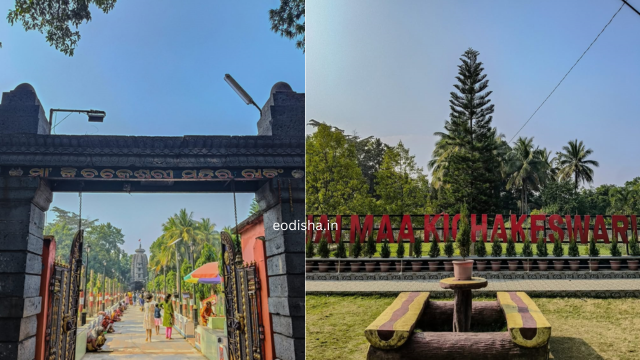
-
By Road: Khiching is about 130 km from Baripada and 90 km from Keonjhar. You can take a bus, taxi, or private vehicle.
-
By Train: The nearest railway stations are Rairangpur (about 45 km) and Badampahar. From there, local transport is available.
-
By Air: The closest airport is Bhubaneswar (about 320 km). From there, you can travel by train or road to reach Khiching.
Where to Stay
Khiching itself has limited accommodation. Options include:
-
OTDC Panthasala (tourist rest house) – basic rooms, usually need prior booking.
-
Hotels in Rairangpur – good for those who prefer more comfortable lodging.
-
Hotels in Baripada – suitable for families and groups; well-connected by road.
It is advisable to make your bookings in advance, especially during festivals or winter season.
Nearby Places to Visit
-
Khiching Museum – located within the temple complex, a must-visit for history lovers.
-
Devkund Waterfall – a scenic spot around 70 km from Khiching, ideal for nature lovers.
-
Similipal National Park – famous for its wildlife, forests, and waterfalls (around 100 km away).
-
Jagannath Temple, Baripada – a cultural and religious landmark in nearby Baripada town.
Frequently Asked Questions
Q. What is Kichakeswari Temple famous for?
The temple is famous for its black stone architecture, ancient sculptures, and as one of the important Shakti temples in Odisha.
Q. What is the best time to visit Kichakeswari Temple?
The best time is from October to March, when the weather is pleasant. Durga Puja and Navratri are celebrated grandly here.
Q. Are there food options near the temple?
Basic food and snacks are available near the temple. For full meals, nearby towns like Rairangpur offer better options.
Q. Is the temple safe for solo or female travellers?
Yes, the area is peaceful and safe. Still, it’s always better to travel in daylight and plan transportation in advance.
Q. Can students or researchers visit for study purposes?
Yes, many history and archaeology students visit the temple and museum to study the sculptures and architecture. Prior permission may be needed for research documentation.


